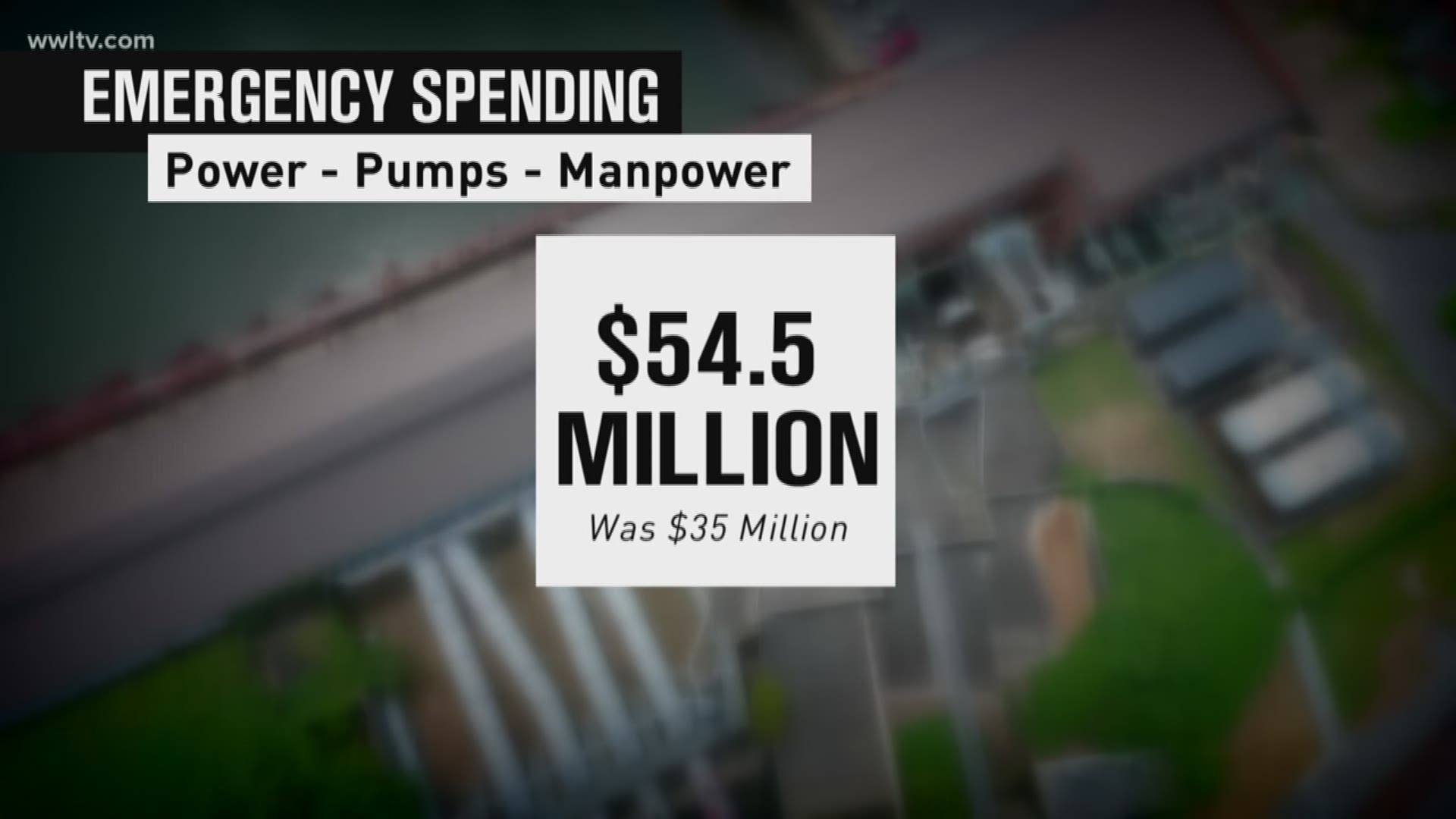NEW ORLEANS – The cost of emergency repairs for the Sewerage and Water Board’s power plant and drainage system keep rising as the board tries to address major failures from March, July and August.
Emergency costs were initially pegged at $48.5 million after a sudden thunderstorm caused major flooding Aug. 5, but have now risen to $54.5 million, according to an update from the Sewerage and Water Board’s emergency manager, Paul Rainwater.
The 12 percent increase raises questions about whether the Sewerage and Water Board will have enough money to meet critical power and drainage needs, in addition to the massive capital improvement projects already under way.
The board’s former Chief Financial Officer Robert Miller, who left for a job in Jackson, Miss., last week, has said the New Orleans drainage system is cash-poor and relies almost entirely on federal aid for capital improvements. The Drainage Department has less than $10 million in cash on hand from three dedicated tax millages.
Miller said last month the emergency repairs would have to come mostly from the 180 days of cash available in the board’s Water and Sewer departments. Those are financed by user fees that raise more than $100 million each annually, while the Drainage Department raises about $56 million a year from property taxes. Sewer and water fees normally cannot be used to fund drainage projects, but they can be used for the power plant, which helps run all three systems.
There is approximately $85 million available to “borrow” from those cash reserves, and more than 60 percent of it is already committed for these emergency repairs.
The Sewerage and Water Board started tapping into that money in March with an emergency declaration that hardly anyone noticed. At a March 9 committee meeting, then-Executive Director Cedric Grant, then-President Pro Tem Scott Jacobs and then-General Superintendent Joe Becker -- all of whom resigned or were fired after the flooding of Aug. 5 – reported that the massive turbines used to power the drainage pumps and some of the potable water pumps had gone down.
But there was no discussion of what happened at the full board meeting two days later. Mayor Mitch Landrieu said his two deputy mayors serving on the board, including Grant, failed to “ring the bell” and tell him about the emergency. Chief Administrative Officer Jeff Hebert said he approved the emergency declaration without knowing how significant that power failure was.
It turns out it was quite significant. Emergency repairs to Turbines No. 3 and 5 will cost $15.5 million, up from an initial estimate of $13.1 million. That’s just the cost of putting those two power sources in working order and doesn’t count the $40 million in federal money already approved to fully refurbish them.
“I mean these are old turbines,” Rainwater said. “The first one was bought (in the 1920s) when Calvin Coolidge was president.”
Then, after the widespread power and pump failures of Aug. 5, the board issued another emergency declaration, reporting that emergency work at the power plant, pump stations and additional staff and management teams would cost $35.4 million. Rainwater’s latest report says that cost has risen to $39.1 million.
More than $400,000 of that is needed to replace switch gear on Turbine No. 4, which caught on fire when the Sewerage and Water Board tried to rush that 100-year-old steam-operated generator back into service after five years and $26 million of repair and refurbishing work.
That setback pushed the return of Turbine 4, which had been the power plant’s primary source for the city’s older drainage pumps, from this month to as late as May 2018, Rainwater said.
“Sometime next year, Turbine 4 will be in place, before hurricane season, so that's the goal,” he said.
The good news is that emergency spending on power has given the Sewerage and Water Board the ability to generate 39 megawatts of the old-fashioned 25-cycle electricity that powers much their system. That’s more than it’s had available in more than five years and is almost as much as the most power it’s ever been able to generate at one time – 43 megawatts during the May 3, 1978 flood.
Other emergency expenses include $8.7 million to rent 26 rental generators to help run pumps and electrical equipment; $13.9 million to buy and install five large electro-motive diesel generators that can produce the kind of old electricity normally produced by the turbines; $6.2 million for pump repairs and installation; $6 million to consultants to investigate what went wrong and to manage the emergency repairs; and more than $550,000 for 100 days of service by the emergency management team, including $150,000 for public relations.
Rainwater says his emergency team’s work will pay off in the form of a plan the mayor and Sewerage and Water Board can follow for significant and lasting improvements in the drainage system.
“We've been doing an alternative power study for the mayor, which hopefully we'll have in the next couple weeks completed,” Rainwater said. “And then the mayor, city council, business leaders will be brought in, start having discussions about how to move forward on this, so you're in the 21st century in the sense of power.”
Are you having problems with the drainage in your neighborhood or the Sewerage & Water Board? Work with the Eyewitness News investigative team to find a solution on our Facebook group Down the Drain: A conversation on New Orleans-area drainage by WWL-TV.

